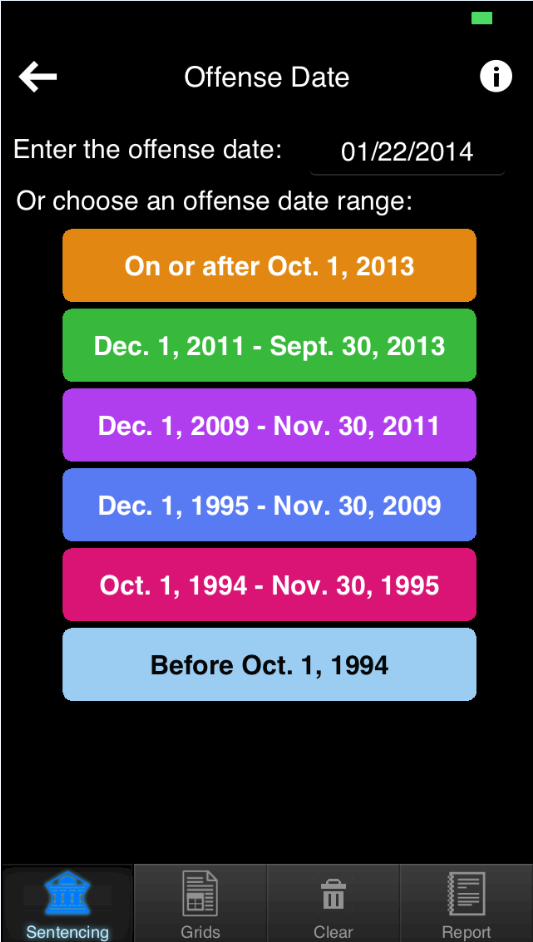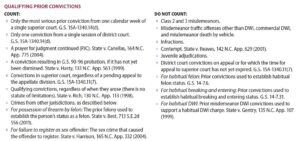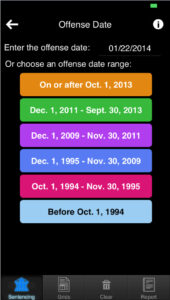
From 1995 to 2009, North Carolina had two sentencing grids—one for felonies, one for misdemeanors. That was it. Then the grid was amended in 2009. And 2011 (with special rules for sex offenders). And 2013, for both felonies and misdemeanors. Because you should always use the grid that was in place when the defendant committed his or her crime—and there’s no flexibility on that, by the way, State v. Lee, __ N.C. App. __, 745 S.E.2d 73 (2013)—you need to have all the grids handy.
With that in mind, a new publication, the North Carolina Structured Sentencing Handbook with Felony and Misdemeanor Sentencing Grids, is available for purchase from the School of Government bookstore. It includes all the grids back to 1994, presented in a refreshed design and color scheme that we hope will be helpful. (I sent out a picture of the page proofs sitting on my kitchen table if you want to preview the new look.)
In addition to the grids themselves, the handbook includes instructions on how to use them. Here’s Step 1:
To the extent possible the instructions are presented in a quick-reference format suitable for use in court. For instance, the section on how to calculate a defendant’s prior record level includes this table of rules for what counts for points and what doesn’t.
The instructions also address other topics including:
- Drug trafficking
- Fines, costs, and fees
- Restitution
- How to sentence multiple convictions
- Jail credit
- Deferrals (deferred prosecution, PJC, and G.S. 90-96)
And there are lots of lists, like:
- All the various conditions of probation (regular, special, intermediate, community and intermediate, and sex offender)
- All the aggravating and mitigating factors
- Commonly charged felonies and misdemeanors, sorted by offense class
- Crimes covered under the Crime Victims’ Rights Act
- Crimes requiring sex offender registration
In general the instructions follow the same step-by-step process used for many years by the North Carolina Sentencing and Policy Advisory Commission in its training and reference materials. Sentencing Commission staff kindly reviewed the new handbook, and I thank them for their expertise and advice. Thanks also to School of Government attorney Christopher Tyner for his review.
The School is selling the handbook for $18. The Administrative Office of the Courts purchased copies for superior and district court judges, appellate judges, district attorneys, and select AOC offices. Distribution of those copies will begin in February and should be complete by March. Please contact Joe Slate (919-890-1532) if you have questions about AOC distribution. The Office of Indigent Defense Services purchased 275 copies for felony public defenders and felony contract attorneys. Please contact IDS if you have questions about their distribution.
I welcome your thoughts on the content and format of the handbook. I intend to produce it as frequently as necessary to address subsequent changes to the law, and of course would like for it to be as user friendly as possible.
And I hope you like the colors we used for the grids, because they’ll also appear in another project that—after some technical delays—is about to finish up.
More on that soon…



